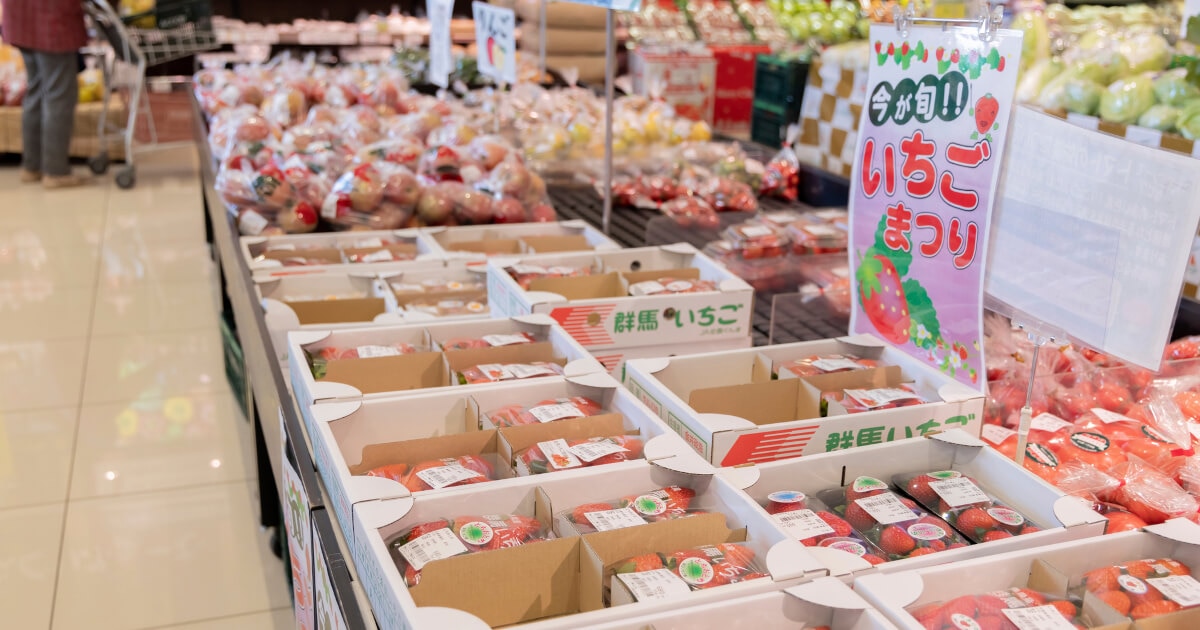
Four points to create a display that sells. What techniques should you keep in mind?
The role of sales floor displays is to make products more eye-catching and attractive, increasing the desire to purchase. Simply lining up products on shelves can result in customers missing the opportunity to come into contact with the products, which can affect sales.
Some store managers and marketing staff may be considering reviewing their sales floors, wondering, "How can we create displays that sell?" or "Are there any techniques that can be used in our stores?"
In this article, we will explain the key points to creating a display that sells and the techniques you should keep in mind.
For tips on creating a sales area, please see this article.
Table of contents [hidden]
- 1.4 points to create a display that sells
- 1.1.① Clarify the theme
- 1.2.② Utilize the color wheel for color scheme
- 1.3.③Create points that attract attention
- 1.4.④ Consider customer movement
- 2.Techniques to keep in mind when designing displays
- 2.1.Change the display method according to the characteristics of the product
- 2.2.Use props and decorations
- 3.Summary_
Four points to create a display that sells
In order to create a display that sells, it is important to create a system that makes it easy to intuitively understand what the product is and that stimulates customers' curiosity and desire to purchase.
① Clarify the theme
The first is to clarify the theme of the display.
By setting themes based on store and product concepts, seasonal events, etc., you can easily convey your appeal to customers and stimulate their desire to purchase.
When setting a theme, the key is to think about ``what kind of target group do you want to see'' and create a sense of unity in the products and decorations placed.
▼Example of theme settings for displays
- Spring outing goods
- Special feature on tableware to brighten up your home party
- Proposing a healthy lifestyle with the blessings of nature, etc.
② Use the color wheel for color combinations
The second is to use a color wheel to determine the color scheme of the display, to appeal to customers in a way that creates the desired impression on the sales floor.
A color wheel is a ring-shaped arrangement of colors that are a mixture of the three primary colors red, yellow, and blue.
▼ Color wheel

Image source: Ministry of Land, Infrastructure, Transport and Tourism “4. Proposals for equipment maintenance that takes into account people with color blindness”
Colors are said to have the effect of affecting people's psychology and emotions, and the way you feel and the image you have of something changes depending on the combination of colors. When creating a display, the key is to choose a color scheme that matches the impression you want to give to your customers.
▼Display color scheme example
- Create a warm atmosphere with a display that uses similar warm colors
- Create an impact by using complementary colors of the theme color as accents, etc.
Creating a display with similar colors that are next to each other on the color wheel creates a calm and cohesive impression. On the other hand, pairing a color with complementary colors that are opposite each other creates a vibrant impression and contrast.
Source: Ministry of Land, Infrastructure, Transport and Tourism "4. Proposal for the development of facilities that take into consideration people with color vision impairments"
③Create points that attract attention
Third, use POP, fixtures, props, etc. to create points that attract customers' attention. This increases the visibility of your product and attracts attention.
▼Example of how to attract the attention of the display
- Place POP that emphasizes the main product
- Displaying products in acrylic cases
- Place a sample that shows the contents in the center of the displayed product, etc.
By highlighting the products you want to sell and adding contrast to the way you display them, you can create a display that naturally catches the eye.
④ Consider customer movement
The fourth point is to install it in a prominent location, taking into consideration customer flow.
By placing displays of main products, new products, and products related to seasonal events in prominent locations along the flow of customers, you can encourage natural movement and draw their attention to the products.
▼Display placement considering traffic flow
- Front entrance of the store
- center of the store
- The end shelf at the back of the store
- In front of the cash register, etc.
By installing displays that guide customers smoothly from the entrance to the back of the store, customers will spend more time in the store and have the opportunity to experience more products.
Techniques to remember when designing displays
When considering store displays, it is effective to incorporate display methods and decorations that will stop customers and attract their attention. Techniques that can be used in display design include:
Change the display method according to the characteristics of the product
In order to improve display visibility, it is effective to change the display method according to the characteristics of the product.
▼Types of display methods in stores
Display method |
overview |
Triangle Display |
A method of stacking tall items in the center and short items on both sides to form a triangle. |
Repeat display |
A method to expand the display area by arranging the same products consecutively with the same spacing and orientation |
Symmetrical Display |
How to arrange products symmetrically and regularly from the center line of the display |
asymmetrical display |
How to arrange your products asymmetrically around the center line of your display |
Double Attack Display |
A method of placing the product you want to sell by flanking it on both sides with best-selling products |
jumble display |
A method of creating volume and impact by randomly placing products in baskets, carts, trays, etc. |
Increasing the display area and quantity of products will create a lively impression and allow you to highlight popular and recommended products. However, this can give the impression of being cluttered, so it is important to organize the products by size, weight, category, etc. so that they are easy to choose and pick up.
On the other hand, if you reduce the amount of products on display and leave space between them, you can create blank spaces on the display and create a luxurious and calm atmosphere. You need to choose a display method that matches the product image and store theme.
Use props and decorations
Using props and decorations is another way to create attractive displays that reflect the theme of your store or products.
By conveying product features through visual elements and creating coordination that appeals to customers' sensibilities, you can increase their desire to purchase.
▼Example of using props and decorations
- Decorate POP with materials that match the product concept
- Decorate with colors, plants, and accessories that evoke the season or event.
- Use fixtures with colors that are consistent with the product's theme color
- Coordinating items related to the product with consideration for the situation in which it will be used, etc.
This article explains in detail how to make POP. Please also check.
summary
In this article, we have covered the following points regarding store displays:
- Key points to create a display that sells
- Techniques to remember when designing displays
In order to catch the eye of customers visiting your store and make them want to buy, you need to create a display that appeals to their curiosity and desire to buy.
The key is to create a sense of unity based on the theme of the store and the image of the products, and to consider where to install displays and how to display them, taking into consideration visibility and flow lines.
In addition, to create displays that sell, it is also effective to use tools that can analyze customer visibility and impressions.
Konica Minolta's "EX Kansei" is based on cutting-edge image analysis technology and emotional brain engineering, and can quantitatively analyze and evaluate the attention and impression of a sales floor. Contribute to increased sales by designing displays from the customer's perspective.
For detailed service details, please check this document.





